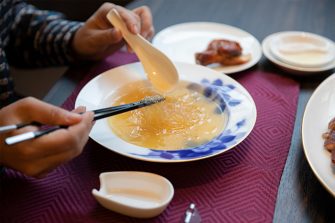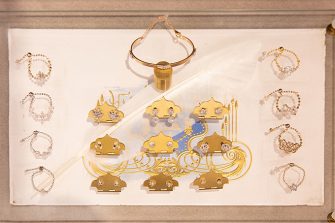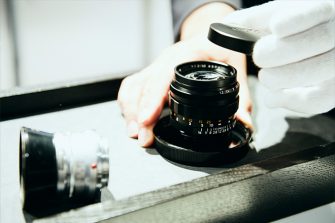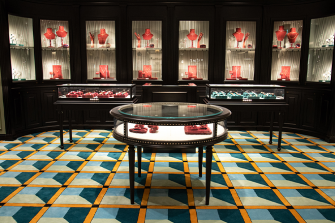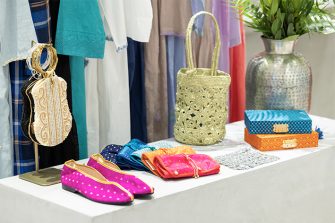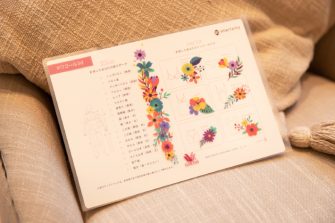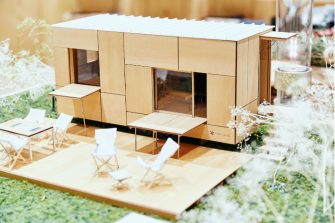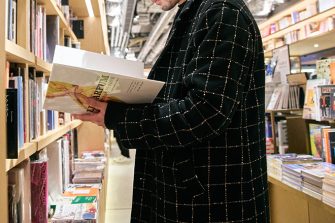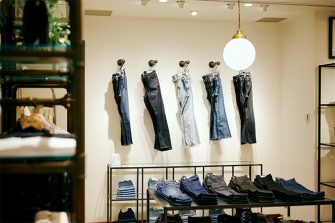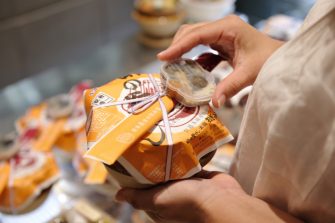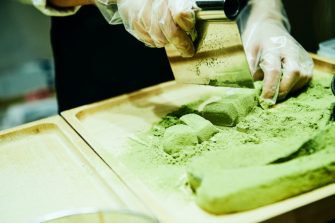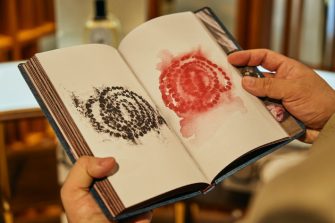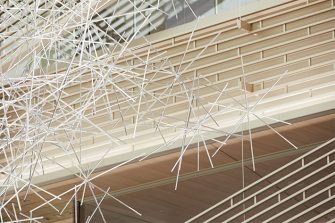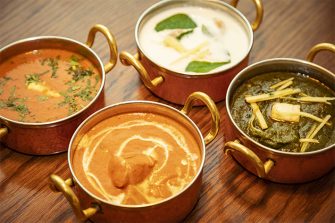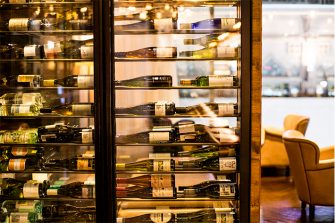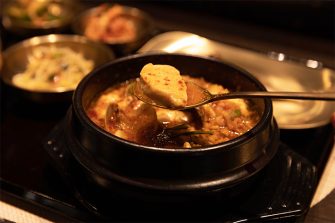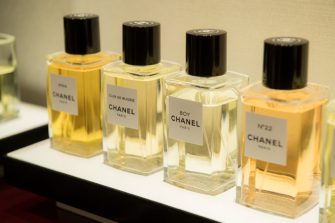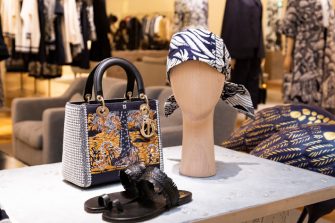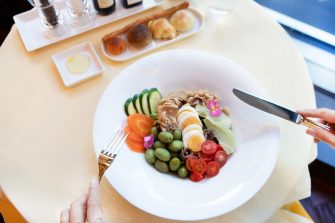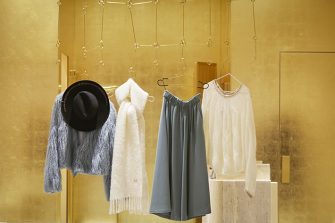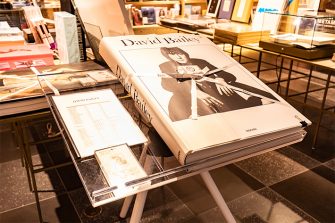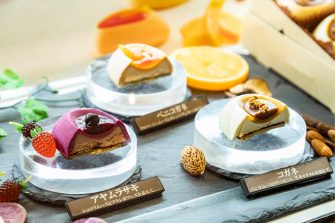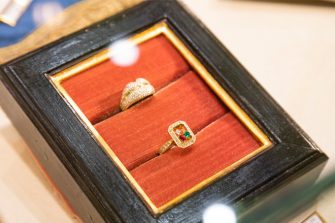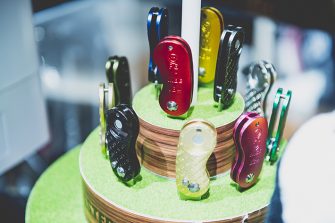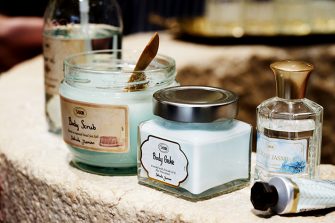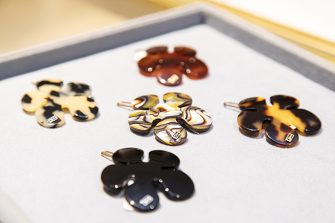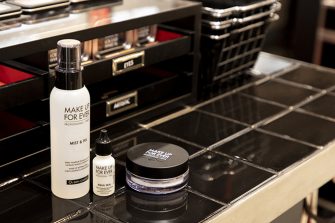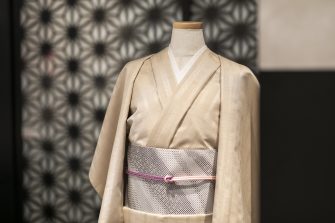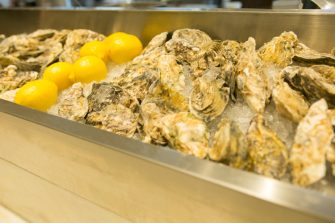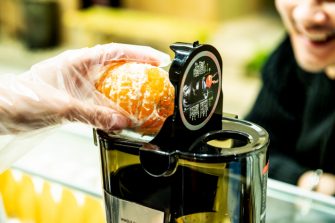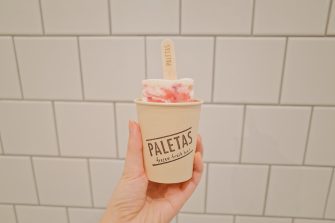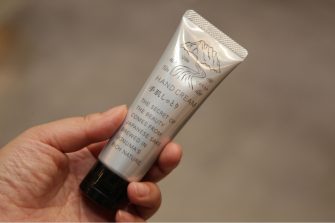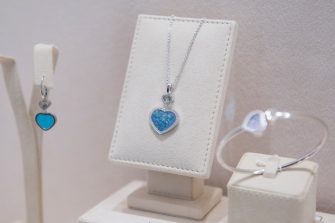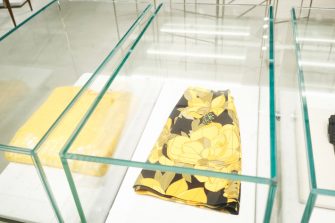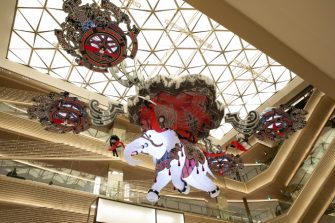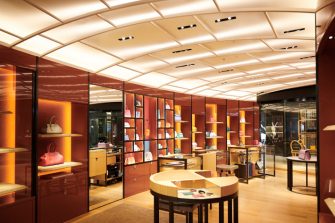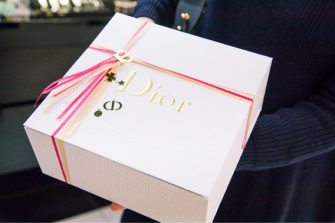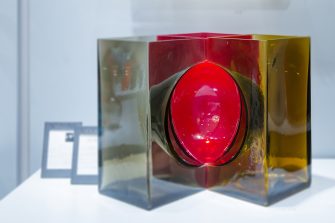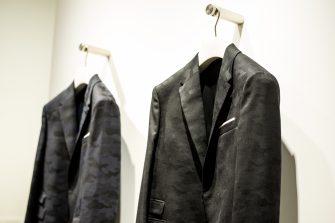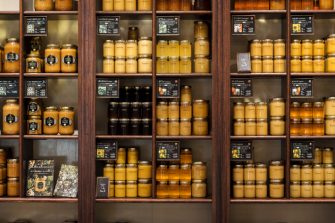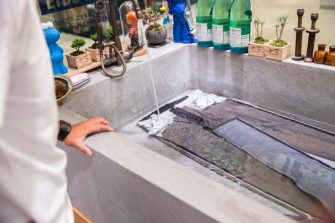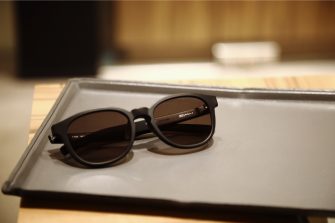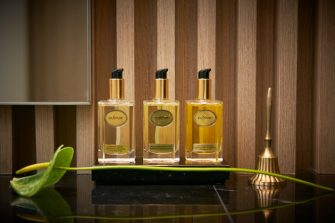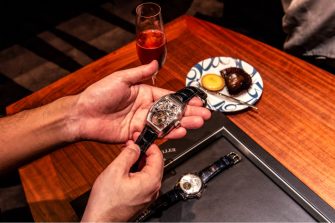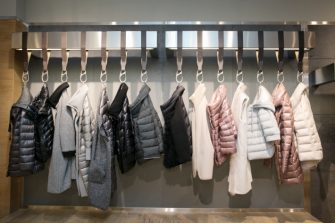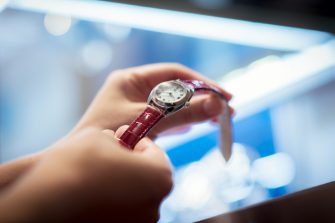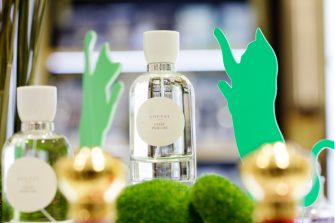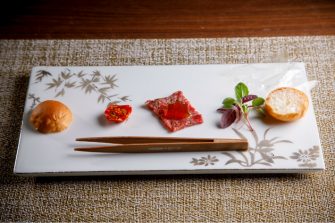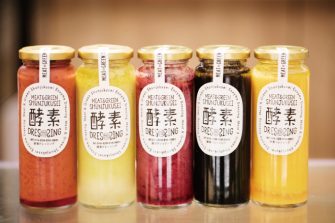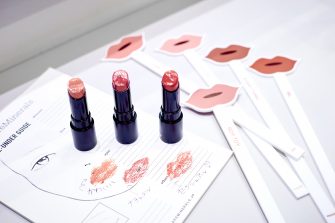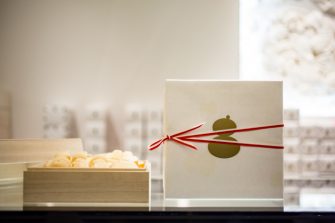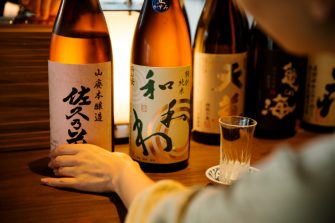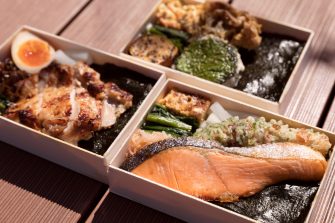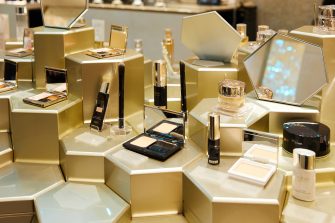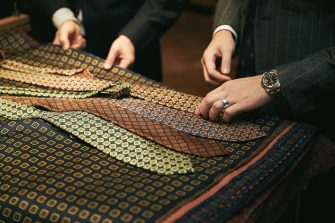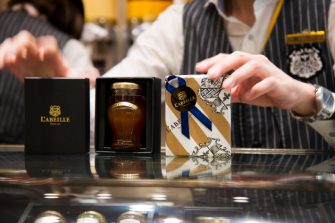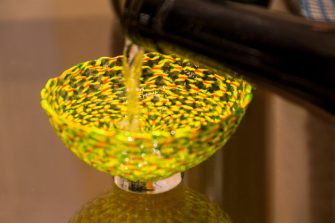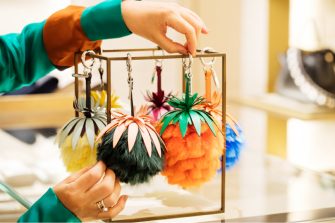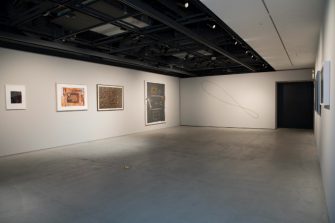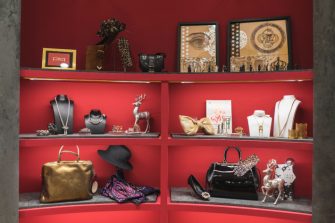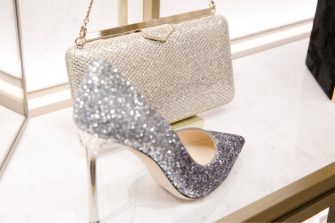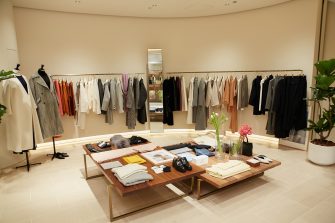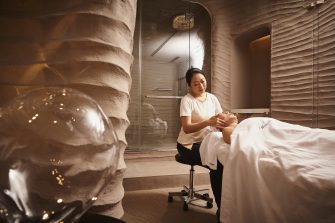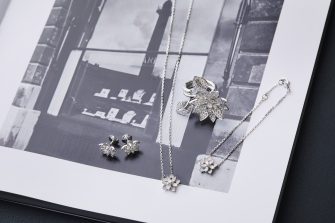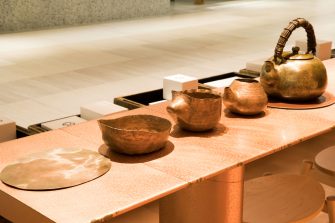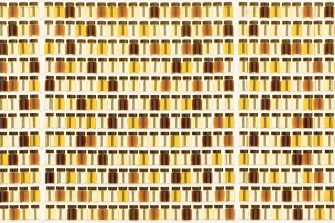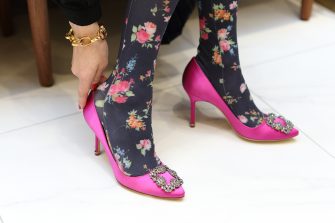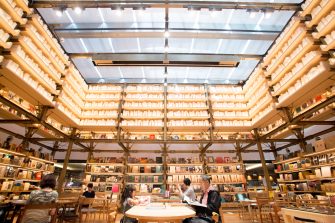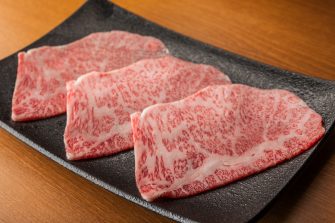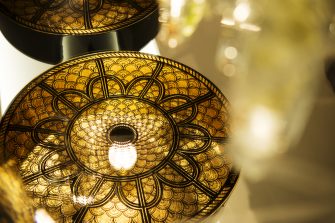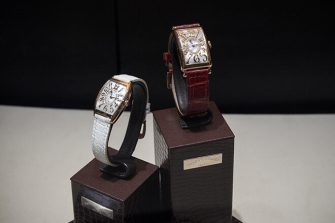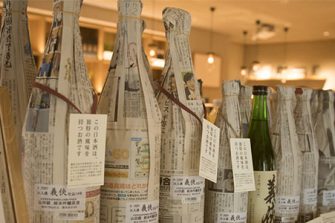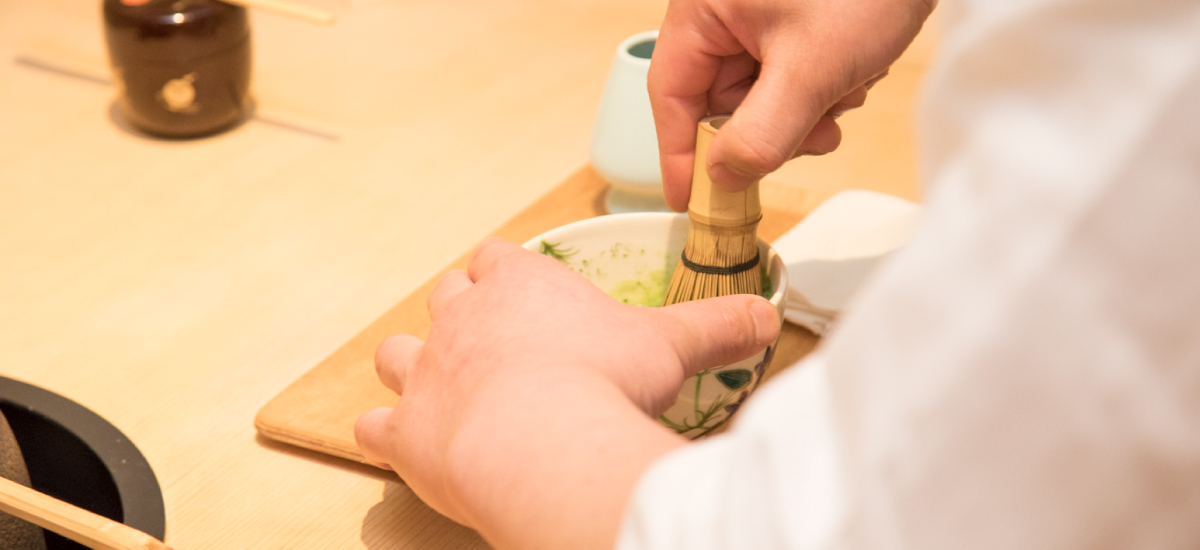

GINZA SIX EDITORS
时尚、珠宝&手表、生活方式、美容、食品…
精通各种类型的个性丰富的编辑们,在GINZA SIX上闲逛
记述走路发现的乐趣。
与茶道的款待相通,编辑力和通融无碍的款待力 A Curator’s Vision and Boundless Hospitality Recall the Art of Chanoyu
中村孝则
GINZA SIX EDITORS Vol.27
这次,我们踏踏实实地巡游GINZA SIX,我觉得这里有着与茶道秘诀相通的招待原点。突然说到茶道,也许有人会觉得约定的事情很多,门槛很高。确实,茶水网罗的范围非常广。从庭院的栽植到石组的小巷盐梅。围绕着茶室的建筑,从精细到壁龛的装饰所需的书画中,茶花、炭道具到香味、怀石料理、点心、季节不同的和服,生活方式都包含在内。在所有这些精细中加入艺术感性的是茶道的有趣之处,千利休就是那个达人。GINZA SIX也改变看法的话,因为是生活方式的综合性演出,在那里随处可见美、编辑性的装置随处可见,我觉得这是茶道性的。利休虽然是茶人,但同时也是拥有审美眼光的艺术总监,也是活动制作人,如果他复活看了GINZA SIX的话,会说“被打败了!”不是到处都会惊讶后悔吗。因为我也是茶人的端口,所以这次想成为利休先生,想去看看用茶人眼线选择的GINZA SIX。
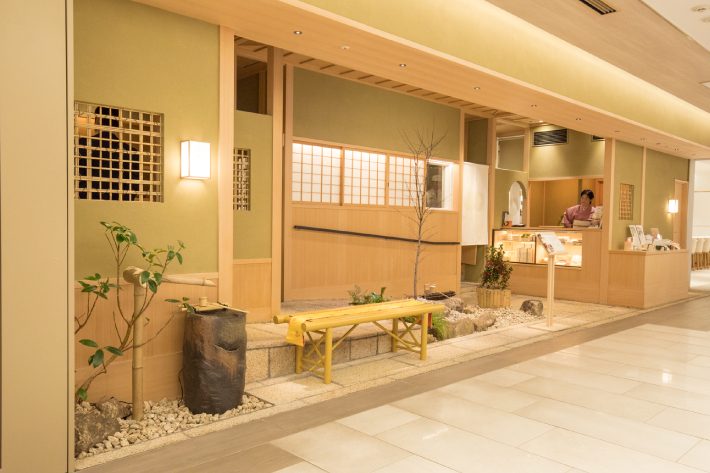
地下2楼的“黑茶”的店铺结构,确实是茶座的设置就那样。经过配有蹲的小胡同进入店内,配置了像小间的茶室一样的5人用的柜台,像市里的山居一样演出非日常感。
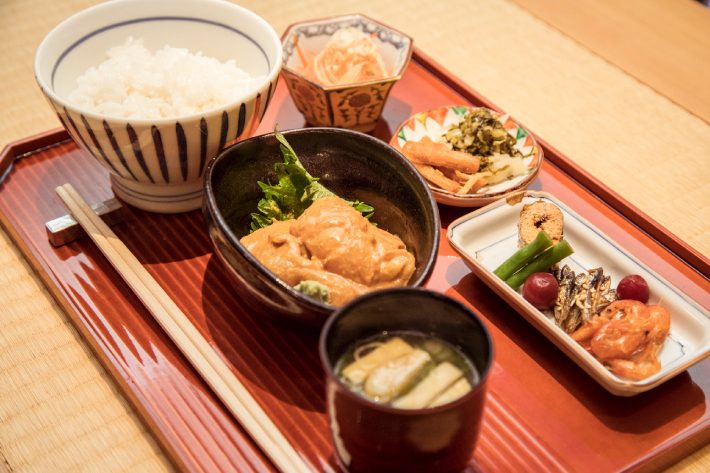
这里的菜单只有名产“鲷鱼茶渍”(3000日元以下全部不含税价格)。但是,不要轻视茶泡饭。虽然不是茶的一汁三菜,但是这个御膳上除了米饭和味增汤之外,还添加了特制芝麻酱的新鲜鲷鱼生鱼片、小碗、醋拌菜和香菜吗。这样就足够的怀石料理了。
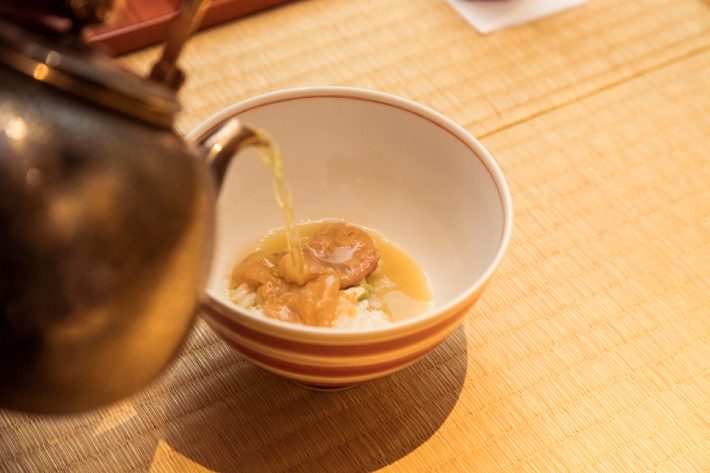
首先,只需煮好的白米饭就可以品尝到鲷鱼,然后用别的盖饭作为茶渍来品尝。可以品尝到不同味道的是味增。这种茶也可以从煎茶和焙茶中选择。
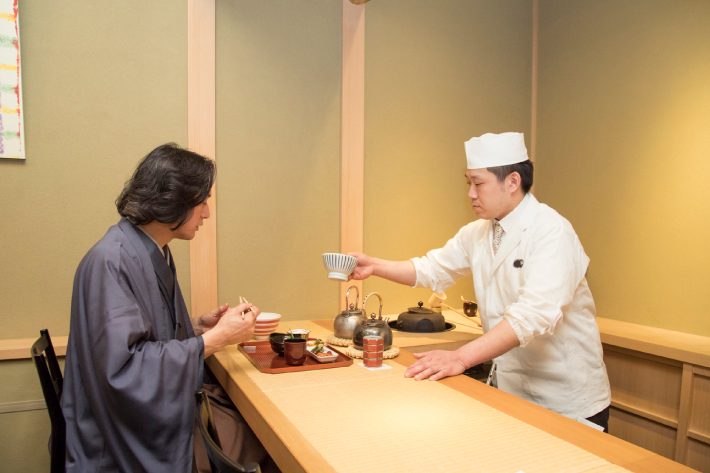
不仅仅是米饭,连芝麻酱的鲷鱼都可以自由续加。顺便说一下,因为是上午10点半开始营业,所以推荐作为晚一点的早餐。东京很少能吃到美味的和食早餐的地方。
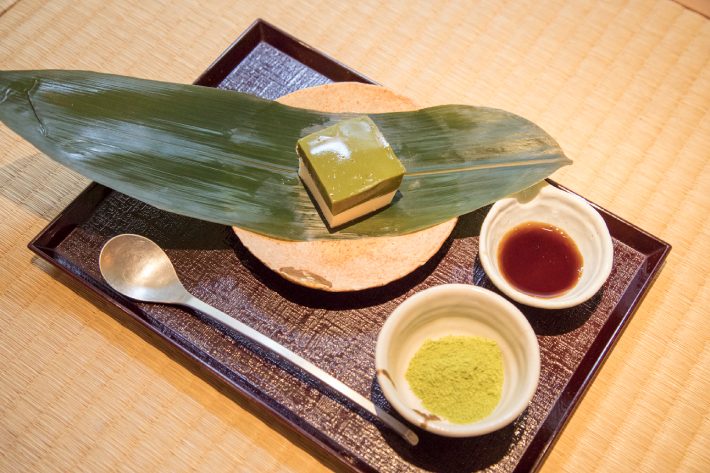
甜点心是作为特产也能买到的“常叶白练”。上半部分是加入宇治抹茶的葛羹,下半部分由北海道产的奶油芝士构成。

和点心一起点抹茶。这家店创立于1790年,与京都的茶老字号“福寿园”合作,可以品尝到真正的抹茶。
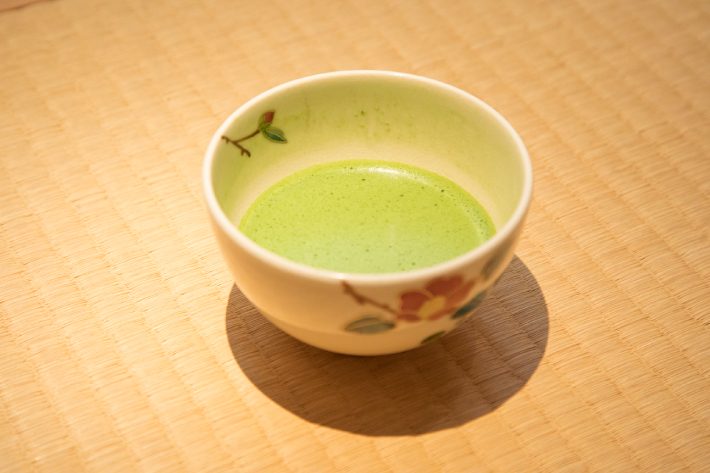
这一天,熟练的手势中村大辅先生的一套衣服。“衣服的大小,真的很好”

13楼的“GRAND CRU CAFÉGINZA”是米咖啡厅的创始人、以咖啡猎人闻名的川岛良彰先生制作的咖啡专卖店。店铺结构简直就像是高级法国料理店一样,可以说是咖啡的终极沙龙,在世界上也是罕见的演出。川岛先生和之前曾出演过我担任常规成员的NHK BS1《艾尔蒙德》的缘分,是一家将“咖啡也有高级葡萄酒般的享受方式”的一贯主张具体化的店。
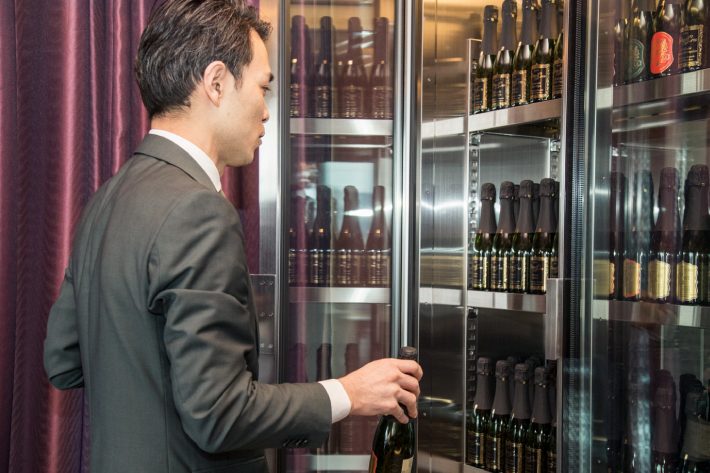
这里的咖啡的特征是,从全世界严选的终极咖啡豆经过烘焙后,一瓶一瓶装在香槟用的瓶子里。客人是按照酒吧的要领购买喜欢的瓶子并沏好的系统。
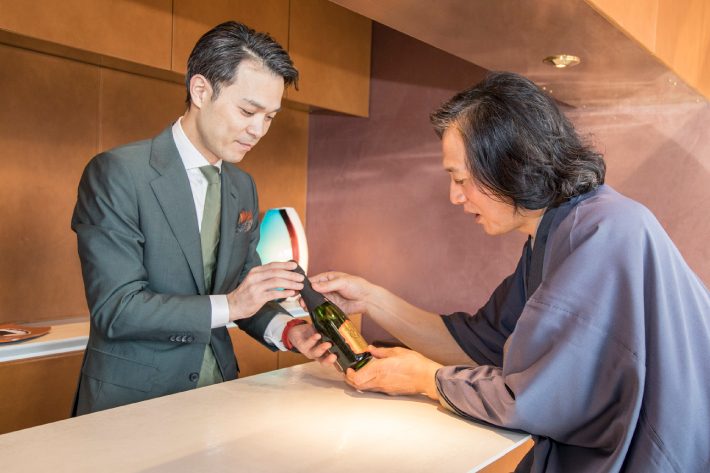
要说为什么要把咖啡豆装进香槟用的瓶子里,是为了封住从豆子里出来的二氧化碳。碳酸气中含有咖啡豆本来的香味和新鲜感。在嘉宾面前打开塞子,伴随着“砰”的小气的声音,烘焙后的芳香也会扩散开来。那是只有在这里才能享受的快感。

咖啡会一杯地在客人面前滴落。这一天,由首席咖啡埃文斯特正木俊树先生点餐。好好量,用87度的热水滴落。这也是官能的瞬间。
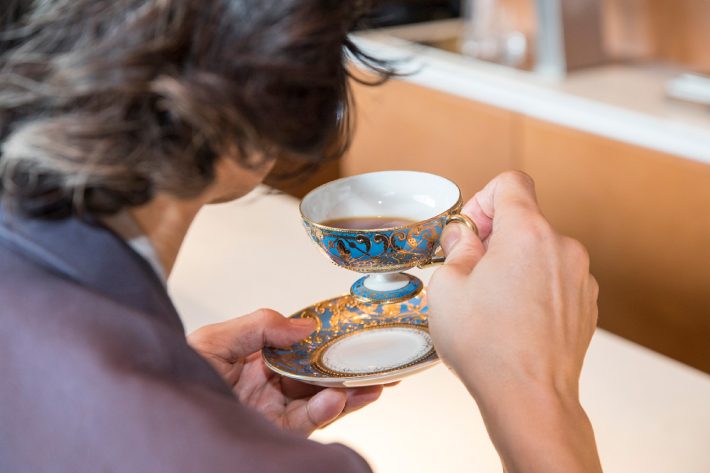
这天选择的豆子是巴拿马科托瓦农场的“里约热内卢水晶盖夏巴甘地自然”。川岛先生经常说“咖啡是水果”,不过,这个咖啡也有优质的布尔戈涅葡萄酒那样的浆果系的水果香,从口腔到鼻腔中舒适地去掉。
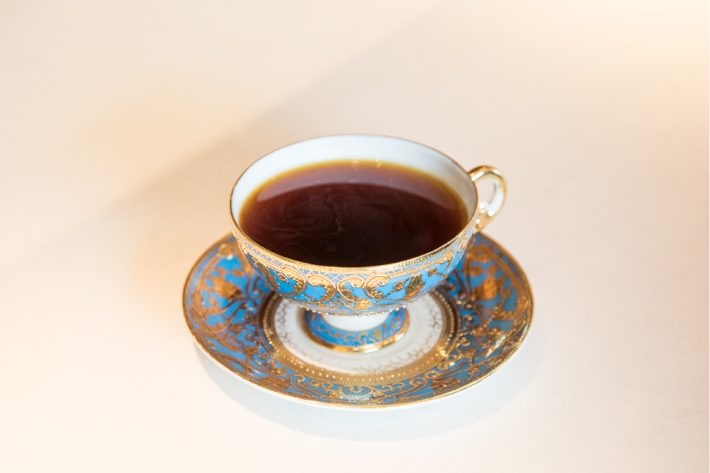
这里的咖啡杯几乎都是老则武的一道菜。用贵重的器皿喝的体验也是特别的体验。
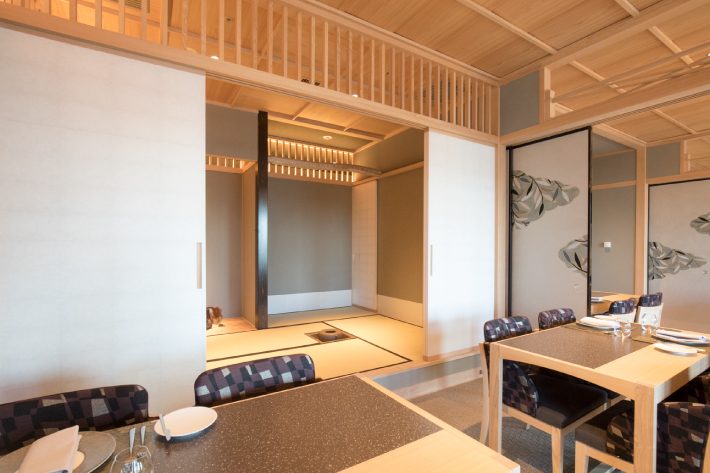
同样位于13楼的“THE GRAND GINZA”以“适合银座大人的日本流行趋势和文化的发源地”为理念,在约500坪的楼层设有休息室、餐厅、派对空间、多功能大厅、茶室、12个座位限定的主厨柜台、酒吧以综合性的接待为目标。
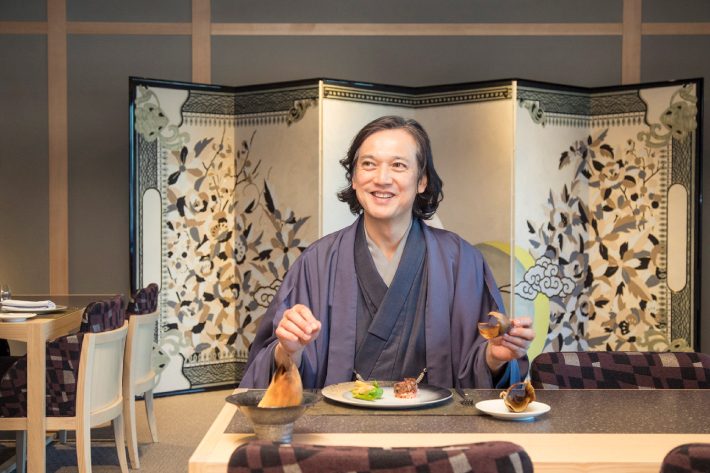
这次在VIP房间吃了饭。在银座的正中央,有这样的和式空间,真让人吃惊。这里是预约制,如果付另外的房费的话,也可以享受附设的餐厅“THE GRAND47”的料理。
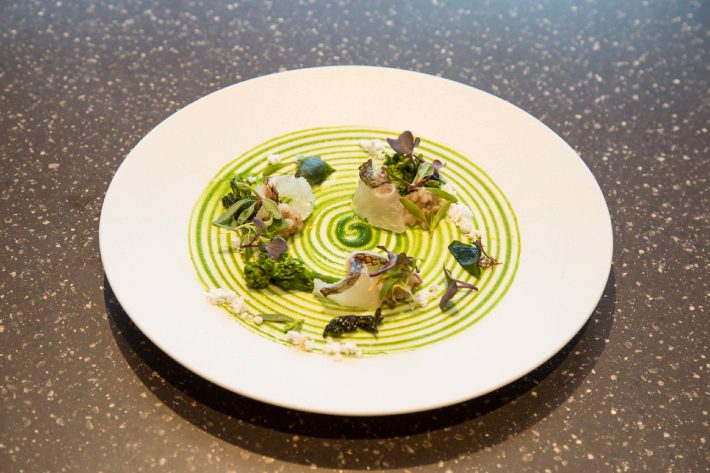
“THE GRAND47”的概念是,47个都道府县的素材和饮食文化,可以在期间享受(午餐套餐:3800日元~,晚餐套餐:7000日元~)。2018年2月15日至3月31日的主题为“四国”。
这里的前菜是以鸣门海峡为印象的盛盘,四国的鲷鱼做成海带。
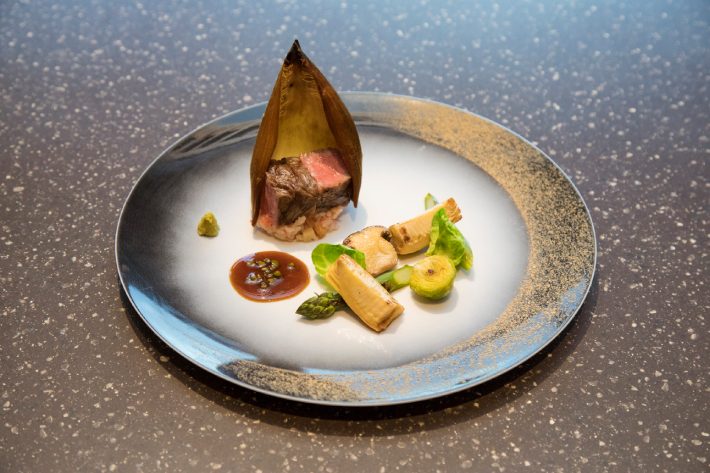
主菜是刚送到的四国时令竹笋和橄榄牛做成的一盘珠玉。
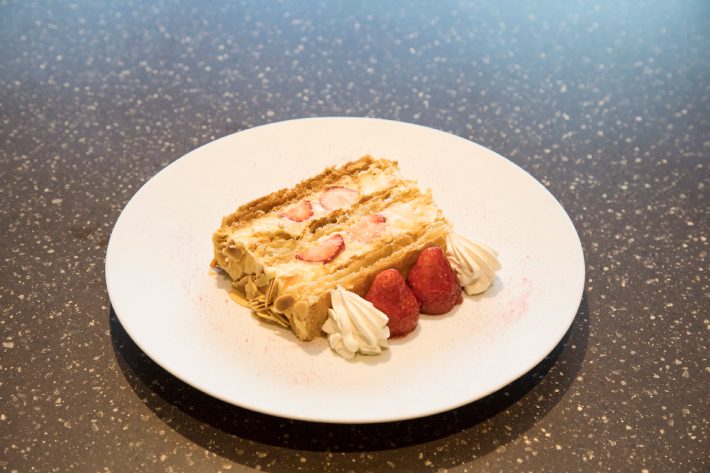
甜点曾经作为银座的味道而为人熟知,2015年关店的“马克西姆·德·巴黎”的名产“草莓千层派”的食谱,从当时的第一代糕点师和原总经理那里继承并再现。这个一天限定20个就可以打包。
这次,因为是茶人眼线,所以特意穿着和服在GINZA SIX的馆内巡游,这是一个适合大人一整天穿着和服巡游的艺术生活空间,是一次珍贵的体验。
Text:Takanori Nakamura Photos:Kanako Noguchi Edit:Yuka Okada
Having made my way around GINZA SIX intensely at a leisurely pace, I’ve concluded there’s a foundational hospitality here comparable to the inner essence of chanoyu, the tea ceremony. The association with the tea ceremony might sound unforeseen, and to some, perhaps, the tea ceremony brings to mind a profusion of esoteric rules. It’s certainly true that the tea ceremony covers a wide range. From the planting and cultivation of garden trees to the look of the pathway and the arrangement of the stones; from the architectural details of the tea room building to the appearance of the tea room itself and its hanging scroll and flower arrangements both indispensable for perfecting an alcove; from the charcoal implements and incense to the traditional kaiseki dishes, confections, and different kimonos to suit the seasons—it encompasses an entire way of life. All of these aspects are intricately detailed and suffused with an artistic sensibility. That’s what makes the tea ceremony, of which Sen no Rikyu was a master, so interesting.
Viewed from a certain perspective, GINZA SIX also produces a profusion of all-encompassing lifestyles. One sees aesthetic and curatorial devices everywhere, which is what prompted the association with chanoyu. Tea master Sen no Rikyu was, in a sense, an event producer and an art director with a keen aesthetic sense. If he were alive today to take in all that GINZA SIX is, he might well be taken aback by the evidence around all of his ideas and ideals. I’m a bit of a tea practitioner myself, so I went around GINZA SIX imagining I was Sen no Rikyu, making selections with a tea master’s eye.

The appearance of Kurogi Chacha on the second belowground floor is exactly like a tea room. You follow a little path by a stone basin and enter. You find a five-person counter laid out like a small tea room. It feels like a mountain villa in the city, a carefully orchestrated, extraordinary experience.

The only item on the menu here is Kurogi’s famous Tai Chazuke (rice soup with sea bream) (3,000 yen; all prices given are before tax). Don’t make the mistake of dismissing this as mere rice soup. It’s not the traditional soup and three side dishes, but the meal does come with rice and miso soup, fresh sea bream sashimi with special sesame sauce, a side dish in a small bowl, a vinegared dish, and pickled vegetables. Certainly adequate as a traditional kaiseki meal.

After starting with some of the sea bream with just freshly steamed white rice, I then enjoy the fish and the rice in a different bowl as rice soup. There’s miso as well, putting before the diner the option of multiple flavors. For the tea, too, you can choose from green tea, roasted green tea, and other varieties.

The rice is all-you-can-eat. In fact, so is the sea bream with sesame sauce. Incidentally, the restaurant opens at 10:30 a.m., so I’d certainly recommend it for a late breakfast. There are few places in Tokyo where you can enjoy delicious Japanese fare for breakfast.

The confection for dessert is Tokiba Shironeri, which can also be purchased as a gift or souvenir. The upper half is arrowroot jelly with Uji matcha tea; the lower half is Hokkaido cream cheese.

The matcha is prepared together with the confection. The restaurant collaborates with Fukujuen, a long-time Kyoto tea purveyor founded in 1790, so you can enjoy truly authentic matcha tea.

Today’s cup was skillfully prepared by Daisuke Nakamura. As said at tea ceremonies, I praised him: “It was very delicious.”

Grand Cru Café Ginza on the 13th floor is a coffee specialty store produced by Yoshiaki Kawashima, founder of Micafeto and renowned “coffee hunter.” The store feels like an elegant French restaurant. But it’s actually what might be called an extreme coffee salon, the likes of which is to be found nowhere else. I met Mr. Kawashima when he appeared on the NHK BS1 program “El Mundo,” where I was once a regular, and this café is the embodiment of his belief that coffee can be enjoyed just like fine wine.
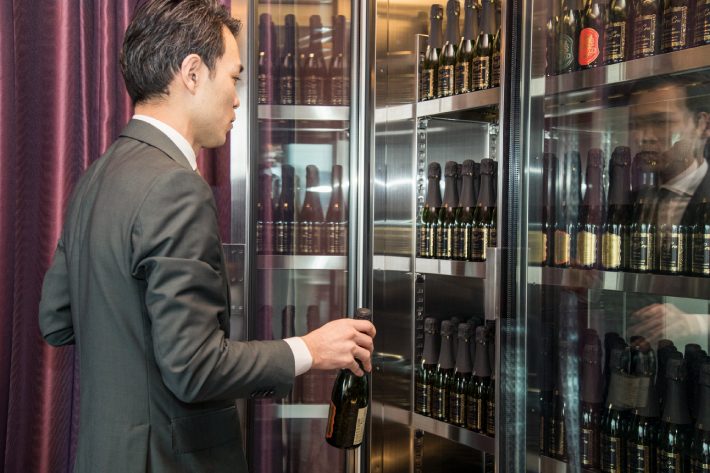
The very finest coffee beans rigorously selected from around the world are roasted, then bottled in one bottle at a time, like champagne. Guests purchase the bottle they prefer, as at a wine bar, and have the coffee brewed.

The coffee beans are placed in bottles (like champagne) to seal in the carbon dioxide given off by the beans. That’s because the carbon dioxide contains the distinctive coffee aroma and freshness. When the bottle is opened in front of the guest, there’s a pleasant popping sound, and the aromatic scent of freshly roasted coffee beans fills the air soon afterward. It’s a pleasure to be found only here.

The coffee is drip-brewed one cup at a time right in front of the guest. Today, my cup is skillfully prepared by principal coffee evangelist Toshiki Masaki. The amount is carefully measured out, and the coffee is drip-brewed with water heated to a precise 87 degrees. This, too, is a delight for the senses.

Today, I chose Kotowa Rio Cristal Geisha Burgundy Natural coffee beans from Panama. This coffee has a fruity, berry aroma that recalls a Grand Cru Burgundy wine, just as how Mr. Kawashima constantly refers to coffee as fruity. It strikes the palate in a very pleasing way.

Almost all the coffee cups are one-of-a-kind Old Noritake cups and saucers. The experience of tasting coffee from such a special and invaluable vessel makes the experience that much more distinctive.

THE GRAND GINZA, also on the 13th floor, is a 1,653-square-meter space that incorporates everything from a lounge to a restaurant, banquet area, multipurpose hall, tea room, 12-seat chef’s counter, and bar, all based on the concept of a gathering spot for adults interested in Japanese food culture and the goal of providing all-encompassing hospitality.

I dined today in the VIP room, a kind of Japanese-style space I was surprised to find in the middle of Ginza. It is reservations-only, but if you pay the separate room charge, you can also enjoy the cuisine from the adjoining THE GRAND47.

THE GRAND47 showcases ingredients and cultures from Japan’s 47 prefectures as part of a constantly changing series of menus. The theme for today is Shikoku. Arranged to resemble the Naruto Strait, this appetizer consists of kobujime sea bream from Shikoku.

The main dish is seasonal, fresh-from-the-garden Shikoku bamboo shoots and Olive Beef on a gem-like plate.

The dessert is a version of the strawberry mille feuille recipe made famous by Maxim’s de Paris, which shuttered in 2015. Once known as the taste of Ginza, the recipe affectionately reproduced here has been handed down from the original first-generation patissier and that establishment’s head chef. No more than 20 of these desserts are made daily. Takeout orders are accepted.
Due partly to my experiment in looking out at the world with the eyes of a tea ceremony practitioner, I felt perfectly free to wander about wearing a kimono. I learned a great deal about GINZA SIX as an “art of life” space ideal for a day for a kimono-clad adult. An experience to treasure.
Text:Takanori Nakamura Photos:Kanako Noguchi Edit:Yuka Okada
中村孝则
专栏作家。以时尚、美食、旅行和生活方式等为主题,进行广泛的写作和演讲等。现任“世界最佳餐厅50”日本评议委员长。剑道教士七段,大日本茶道学会茶道教授。著作有《名店食谱的巡礼学习》(世界文化社)、合著有《The Singer Life》(Hiromi Enterprise)等。


